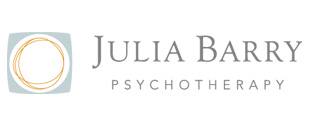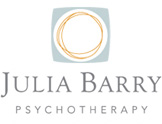

Julia Barry’s Private Psychotherapy Practice in Boston’s Financial District
Julia Barry, MFT, SEP offers personalized psychotherapy treatment to adult individuals, couples, families and mother/infant pairs. Throughout the course of therapy with Julia, a variety of psychotherapy approaches may be utilized, individually or in combination, in order to reach a client’s personal goals and according to Julia’s assessment of what is most beneficial. Psychotherapy modalities clients may experience while working with Julia Barry include:
Cognitive Behavioral Therapy (CBT)
Cognitive Behavioral Therapy (CBT) offers the opportunity to recognize the connection between our thoughts, feelings and behavior. CBT builds skills in modifying the impact of dysfunctional thinking patterns, assisting in changing our behavioral patterns and coping with stressors in a more positive manner.
Psychodynamic Psychotherapy
Psychodynamic Psychotherapy emphasizes the effects of early relationships in the formation of our sense of self and our relationships to others. The relationship between therapist and client may be utilized and explored as an instrument of change.
Clinical Hypnosis:
The American Society of Clinical Hypnosis defines hypnosis as:
“A state of consciousness involving focused attention and reduced peripheral
awareness characterized by an enhanced capacity for response to suggestion.”
Professionals use clinical hypnosis to help clients bring about both psychological and physiological change in three main ways. First, they may use mental imagery or one’s imagination. The mind is capable of using imagery, even if it is only symbolic, to assist us in bringing about the changes we are working toward.
A second basic hypnotic method is to present ideas or suggestions to the patient. In a state of concentrated attention, ideas and suggestions that are compatible with what the patient wants have a more powerful impact on the mind.
Finally, hypnosis may be used for unconscious exploration, to better understand underlying motivations or identify whether past events or experiences are associated with causing a problem. The effectiveness of hypnosis appears to lie in the way in which it bypasses the critical observation and interference of the conscious mind, allowing the client’s intentions for change to take effect.
To learn more visit: http://www.asch.net
Attachment Theory
Attachment Theory describes how the functional relationship between a parent or primary caregiver and a child within the first three years of life:
- Impacts the developing brain
- Contributes to a sense of trust in self and others
- Supports the experience of safety in the world
Regardless of the therapeutic approach Julia is utilizing, the impact of early attachment on the physical, social, emotional, intellectual and spiritual development of clients is the foundation of her work. Julia is passionate about facilitating the development of secure attachment relationships between mother/infant pairs, and also provides counseling to repair attachment challenges in infants, children, adults and couples.
Mindfulness
Mindfulness is a practice paying attention to the present moment and responding skillfully. Mindfulness can be cultivated through a formal meditation practice, such as Insight Meditation, and is also a skill that can be utilized in our daily life and relationships to more fully acknowledge and accept feelings, sensations and thoughts as they arise.
Somatic Experiencing (SE)
Julia believes that a complete therapeutic process honors the link between brain, body and nervous system. Somatic Experiencing® is a gentle, naturalistic technique developed by Peter Levine, PhD, which focuses on the way overwhelming, stressful or traumatic experiences get stored in our bodies and nervous systems. We all experience stress and trauma, and our bodies are naturally inclined to move into fight, flight or even freeze in order to protect ourselves from danger. When we experience repetitive stress or trauma that is too overwhelming for our bodies and minds to tolerate, our nervous systems often get stuck in these survival patterns long after the original event has occurred. These “survival energies” can get stored in the body and often manifest as physical or psychological symptoms. SE’s gradual approach emphasizes the body’s innate healing mechanisms and assists clients in cultivating resilience and reinstating a capacity for self-regulation.
Eye Movement Desensitization and Reprocessing (EMDR)
EMDR is an evidence-based psychotherapy that helps clients to heal from the symptoms and emotional distress that result from overwhelming life experiences. Clients often find that they experience insights in EMDR therapy that once took years for traditional talk therapy to address. EMDR therapy demonstrates that the mind heals from psychological trauma as the body recovers from physical trauma. When you injure yourself, your body works to heal the wound. If a foreign object or repeated injury irritates the wound, it slows down the healing process and causes pain. Once the block is removed, healing can continue. Similarly, if neurological processing is blocked due to the impact of a disturbing or repeatedly difficult experience, the thoughts, sensations, images and emotions associated with the experience can get stuck, causing intense suffering in both body and mind. Once the block is removed, the brain is able to process the experience as normal and healing resumes. Using EMDR within the context of the therapeutic relationship, clients are assisted in activating their natural healing process.
To learn more about EMDR therapy, please visit: www.emdria.org

